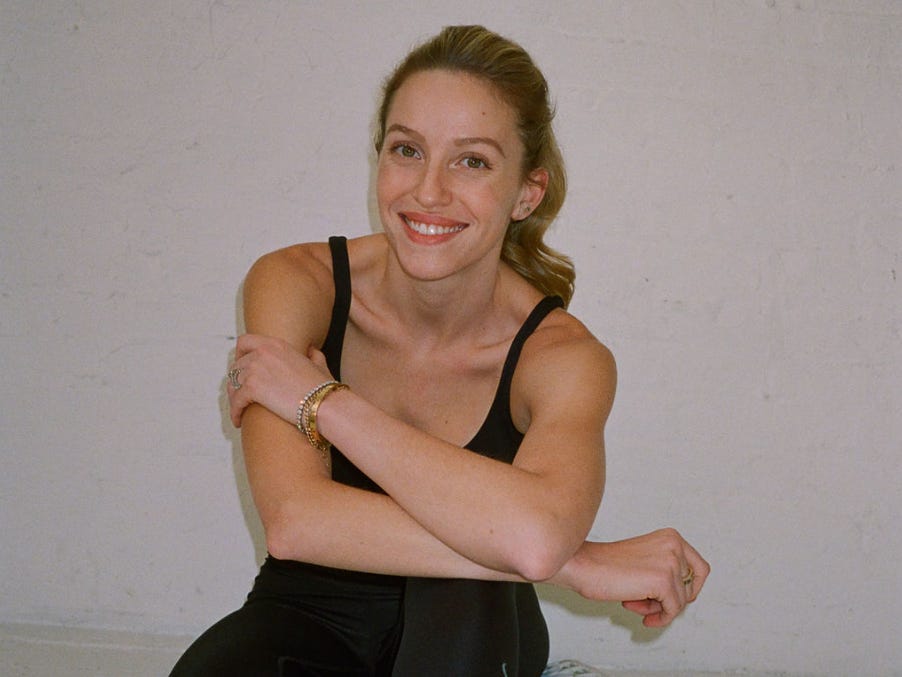
Courtesy of Hilary Hoffman/SotoMethod
If you ask personal trainer Hilary Hoffman her top tip for gym-goers, it’s simple: stop working yourself to total exhaustion.
Hoffman came to this realization while she was working a high-pressure job as a financial analyst in the mid-2010s, often having just five minutes a day for exercise.
She became fixated on designing an exercise regime that was intense without exhausting her or making it hard to keep up with her demanding career.
It turns out, the ideal workout is similar to the perfect job; tough enough to spark growth and reward big ambitions, but supportive enough to overcome the challenges.
“You’ve got to work hard, but if you’re working hard at something that has no upward trajectory, that’s not on you in terms of your ability to succeed, it’s really on your environment,” Hoffman, founder of the fitness program SotoMethod, told Business Insider.
You can make more gains by working out just hard enough that you feel the burn without burning out, Hoffman said.
“I’m going to tell you to push through a challenge, push through a burn,” she said. “If you feel pain or if you feel discomfort, those are your signs to stop. But you’ve got to determine what resistance looks like versus pain.”
Here are some ways to tell if a hard workout is doing more harm than good — and how it should feel when you’re doing it right.
Red flags: total exhaustion and inconsistency
A common gym mistake is thinking you need to be exhausted to get a good workout, but fatigue and soreness don’t necessarily mean you’ll get results.
Warning signs that you’re overtraining or pushing too hard include:
- You feel pain or discomfort in your joints or areas that aren’t supposed to be working, like back pain during a core workout.
- You’re completely drained after working out.
- You dread working out, are consistently tempted to skip a scheduled workout, or often consider cutting it short.
- Working out feels overwhelming; you struggle to maintain your exercise schedule over time.
The most effective workout strategy is to find exercise you can do consistently over the long-term so you can keep making progress.
If something isn’t working, check in to make sure you’re keeping good form, consider easing up on the intensity, or shorten the workout, according to Hoffman.
“The strongest thing you can do when you feel pain is to stop because you’re just protecting your body so that you can come back tomorrow and do this again to build more strength,” she said.
Green flags: building a habit and connecting with your muscles
Exhausting your muscles can prompt them to build back bigger and stronger, but only if you’re able to recover from exercise and avoid hurting yourself in the process.
Look for signs that your hard work is putting the right kind of stress on your body so it can adapt to become stronger and more resilient:
- You feel the burn in the muscles you’re supposed to be working, like glutes and hamstrings for a leg workout.
- Your workouts leave you feeling accomplished and invigorated more often than not.
- You generally look forward to your workouts or enjoy them once you get started (even if you don’t always feel like doing them).
- Exercise starts to feel like a habit that fits naturally into your schedule.
Adjust the length of your workouts, the intensity, and the exercises you choose to match your goals, Hoffman said.
“Define the finish line before you start so you can really scale your energy to make sure that you cross that finish line with that perfect balance of fully exhausted muscle without pain,” she said.
The post Working out too hard can backfire. A personal trainer shares 4 red flags and 4 green flags to optimize your routine. appeared first on Business Insider.




